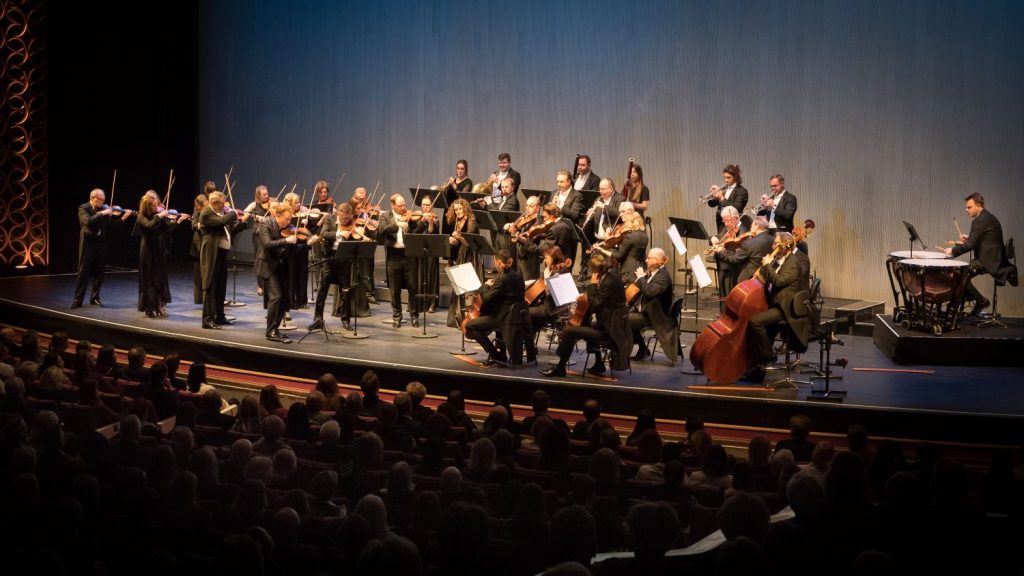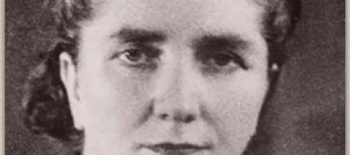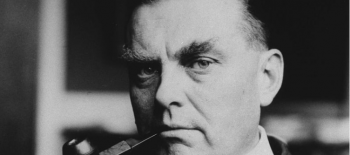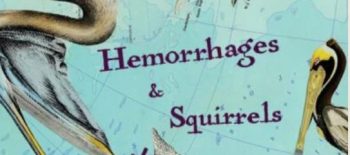Daniel Hope with the Polish Chamber Orchestra of Sinfonia Varsovia: “Journey to Mozart”
Polish Chamber Orchestra: “glistening dynamism … sculpted, strongly-contoured playing” – The Independent
Sunday, February 23 at 7:30 PM
Indian River Symphonic Association
Community Church of Vero Beach
1901 23rd Street, Vero Beach, FL 32960
Tickets
Monday, February 24 at 7:00 PM
Beyond The Stage Pre-Concert Talk at 6:30 PM
Kravis Center Persson Hall
701 Okeechobee Boulevard, West Palm Beach, FL 33401
Tickets
Friday, February 28 at 8:00 PM
Schwartz Center for Performing Arts
Emerson Concert Hall
1700 N. Decatur Road, Atlanta GA 30322
Tickets
Sunday, March 2 at 6:30 PM
Vilar Performing Arts Center
8 Avondale Lane, Beaver Creek, CO 81620
Tickets
PROGRAM:
Christoph Willibald Gluck (1714-1787)
“Dance of the Furies” from Orfeo ed Euridice, Wq. 30
Franz Joseph Haydn (1732-1809)
Concerto for Violin and Orchestra in G Major, Hob. VIIa:4
I. Allegro moderato
II. Adagio
III. Finale: Allegro
Wojciech Kilar (1932-2013)
Orawa
Wolfgang Amadeus Mozart (1756-1791)
Concerto for Violin and Orchestra No. 3 in G Major, KV216
I. Allegro
II. Adagio
III. Rondeau: Allegro
Franz Joseph Haydn
Symphony No. 49 in F minor ‘La passione’
I. Adagio
II. Allegro di molto
III. Menuet e Trio
IV. Presto
PROGRAM SUBJECT TO CHANGE
The Polish Chamber Orchestra performs across the United States this February and March with versatile violinist Daniel Hope, “the most exciting British string player since Jacqueline du Pré” (New York Times). The “Journey to Mozart” program includes violin concertos by Haydn and Mozart, Haydn’s Symphony No. 49 in F minor ‘La passione,’ and works by Gluck and the Polish composer Wojciech Kilar.
This is the first time the Polish Chamber Orchestra has toured in the U.S. since 2006. The ensemble was formed in 1972 and has performed in the world’s most prestigious concert halls under conductors Charles Dutoit, Yehudi Menuhin, and Mstislav Rostropovich, among others. Their performances and recordings have garnered international attention over decades, praised for their “glistening dynamism” and “sculpted, strongly-contoured playing” (The Independent). The Polish Chamber Orchestra operates under the auspices of Sinfonia Varsovia.
“I am thrilled to perform this profound program with the Polish Chamber Orchestra,” says Daniel Hope. “I am excited for U.S. audiences to experience the unparalleled musicianship of this fantastic orchestra with whom I have had a long-lasting artistic relationship. Making music with them is an absolute joy.” Read Daniel Hope’s interview with EarRelevant. The podcast interview with Sinfonia Varsovia director Janusz Marynowsi is available at direct links: YouTube, Spotify, Apple.

PROGRAM NOTES
Gluck: Dance of the Furies from Orfeo ed Euridice, Wq. 30
A musical time-traveler would certainly be delighted and doubtless surprised to land in Vienna or any of the other great cities of the Habsburg Empire in the mid-1700s. There they would discover the correspondence between the rapidly evolving forms of the symphony, the concerto, the ballet, and the opera, close not just in terms of compositional styles but also, and perhaps above all, of the vitality and passion embedded in the language of the music itself. The sounds of street songs, tavern dances, fairground troupes, and military bands also filtered into the world of the concert hall and opera house, sometimes used for the sake of irony, sometimes for the sake of wit, often to add aesthetic variety and fresh colors to already colorful compositions.
Empress Maria Theresa was present at the first performance of Orfeo ed Euridice, given at the Burgtheater in Vienna in 1762. Gluck’s work marked a root-and-branch reform of the ‘serious’ style of Italian opera with which audiences were familiar, stripping away many of its convoluted conventions to uncover the all-too-human drama at the heart of one of the best known of all Greek myths. In keeping with the prevailing attitudes of the Enlightenment, Gluck struck the ideal balance between reason and sentiment, the former applied to matters of form, harmony, and phrasing, the latter to his music’s power to stir the affections. Orfeo ed Euridice soon found favor across Europe; one production, staged for Prince Nikolaus I of Esterházy in 1776, was conducted by Joseph Haydn.
The Dance of the Furies was added to the French-language version of the opera that Gluck created in 1774 for the Académie Royal in Paris, where it crowns the dramatic opening scene of the second act. ‘This opera displays the fine talents of the dancers with lively effect,’ noted the Mercure de France after the revised work’s first performance. The piece, which the composer recycled from the final number of his ballet Don Juan, harnesses the energy of the malign spirits, the Furies, who have struggled to prevent Orfeo from entering the Underworld to rescue his beloved Euridice only to be tamed by the eloquence of his singing. Their fleeting display of tender mercy gives way to the quivering arpeggios, demonic descending scales, and blaring horn calls of the Furies’ dance.
Haydn: Concerto for Violin and Orchestra in G Major, Hob. VIIa:4
Haydn was sufficiently competent as a violinist to play professionally for court balls in Vienna in the mid-1750s. Throughout the following decade, having taken up the post of assistant Kapellmeister to the Esterházy family in 1761, he composed little other than instrumental music; he also assumed responsibility for raising the standards of the court orchestra at the Esterházy’s palace at Eisenstadt. Haydn had the good fortune to work with the Eisenstadt band’s concertmaster, Luigi Tomasini, who had been brought to the court from Italy as a page in the early 1750s and later studied violin with Mozart’s father, Leopold. Tomasini and Haydn became close friends, the latter standing as godfather to several of the former’s children. The first of the concertos for violin listed in Haydn’s personal catalogue of works was, according to a note in the composer’s hand, ‘fatto per il luigi’ (‘made for Luigi’).
The Concerto for Violin and Orchestra in G major appears in the thematic catalogue of compositions issued in 1769 by Breitkopf, the Leipzig-based music publisher. While the work’s absence from Haydn’s own catalogue and certain anomalies in its earliest sources have prompted some scholars to doubt its authenticity, the music’s strength of invention and wit present a cast-iron case for attributing it to the composer. Judged not least by the formal simplicity of its outer movements and want of technical fireworks, the work perhaps pre-dates Haydn’s early years at Eisenstadt, possibly written in the late 1750s for the concert master of Count Morzin’s court orchestra; it is likely, however, that it was performed by Tomasini, who would have graced the work’s flourishes with his refined artistry.
The concerto opens with an extended orchestral introduction, the elegant principal theme of which is taken up and embellished by the soloist, before serving as a ritornello for the full ensemble. Haydn spices the movement’s pleasing galant style with brief diversions into the minor mode and passages of spirited dialogue for soloist and orchestra. Melody rules the work’s Adagio. Here the solo violin sings an exquisite aria-without-words, its line reinforced by a sonorous accompaniment forged within the movement’s home key of C major or its near-relatives. Haydn’s studies of counterpoint in the stile antico, the ‘old style’, left their mark on the G-major Concerto’s irresistible finale; likewise, his fascination with the expressive power of folk music to conjure familiar images or emotions associated with popular entertainments registers in the little drone effects he adds to the solo part. The movement unfolds as a study in the art of repetition, simple in its raw material yet rich in the variety of its melodic gestures.
Kilar: Orawa
Repetition and the subtle development of rhythmic patterns are central to Orawa, Wojciech Kilar’s symphonic poem for string chamber orchestra. The work, written in 1986 for the strings of the Polish Chamber Orchestra, draws its inspiration, and much of its vibrant energy, from the traditional dances of the Tatra highlanders from southwest Poland. It takes its title from the dialect preserved in the village of Orawka and surrounding settlements near the border of Poland and Slovakia. Best known for his soundtrack scores, including those for Roman Polanski’s The Pianist and Francis Ford Coppola’s Bram Stoker’s Dracula, Kilar, who studied with Nadia Boulanger in Paris in the early 1960s, was equally at home (and imaginative) in writing for the concert hall. Orawa captures the generous spirit of Tatra folk music and of the people who created it. ‘It is pretty much a piece for a magnified folk band and one of the rare examples where I’ve been happy with my work,’ the composer confided in a collection of conversations published posthumously in 2014.
Mozart: Concerto for Violin and Orchestra No. 3 in G Major, KV216
Mozart’s all-round early education was provided by his father, the violinist, composer, and music theorist, Leopold Mozart. In addition to learning the skills of literacy and numeracy, and receiving moral and religious instruction, the boy’s tuition included comprehensive training in the performance and composition of music. He began playing the keyboard at the age of four and added violin and organ to his studies two years later. According to Leopold’s colleague, the Salzburg court trumpeter and violinist Johann Andreas Schachtner, writing in January 1763, the five-year-old Wolfgang was able to play the second violin part in a trio for two violins and viola before he had received a lesson on the instrument: “You don’t need to have studied to play second violin,” he said, before proving his point. A near-contemporary report from Salzburg, published in the German city of Augsburg, recalled how ‘the boy can now not only play from the violin clef, but also from the soprano and bass clefs, and takes part in everything on a small violino piccolo made specially for him, having already appeared with a solo [piece] and a concerto at the Salzburg court. Has he then learned this since the New Year?’ Many years later Mozart’s father, a stern critic, expressed frustration that his son, universally feted as a keyboard player, could be the ‘premier violinist’ in Europe, if only you will do yourself credit and play with energy, with your whole heart and mind’.
It is possible that Mozart composed his five Violin Concertos, the last four of which were written between June and December 1775, to demonstrate his solo artistry as incumbent concertmaster of the Prince-Archbishop of Salzburg’s court orchestra. The Violin Concerto No.3 in G major KV 216, created in September 1775, heralds a remarkable development in the quality and maturity of Mozart’s music. The work’s melodic invention, rhythmic elan, and emotional intensity, especially but not exclusively in the central Adagio, echo the expressive language of its composer’s recent stage works, La finta giardiniera and Il rè pastore among them. Indeed, it begins with a ritornello constructed from music originally composed for the aria ‘Aer tranquillo’ from Il rè pastore, first performed in Salzburg in April 1775. The deftly crafted, often dramatic interactions between soloist and ensemble in the first movement underline the concerto’s theatrical, heart-on-sleeve character.
Mozart changes scene in the Adagio, softening its mood by introducing two flutes in lieu of the opening movement’s pair of oboes and sustaining the soloist’s sublime melodic line above a bed of gently pulsating triplet figures. In the spirit of opera, the work delivers a surprise midway in its lively rondo finale: rather than make a decisive final return to his triple-time main theme, three orchestral chords raise the curtain on an Andante episode, a beguiling gavotte cast in duple time, which in turn gives way to a new tune based on ‘The Strassburger’, a popular hit of the day. Mozart allows the music to meander towards a solo cadenza and the celebratory return of the rondo theme.
Haydn Symphony No. 49 in F minor
Haydn’s Symphony No.49 in F minor projects the fluid nature of musical categories during the mid-1700s. The work, written for the Esterházy court orchestra and dated to 1768 in the composer’s autograph manuscript, follows the traditional form of the church or ‘da chiesa’ symphony. Scholarly consensus suggested that the symphony was conceived for performance during Holy Week, a proposition supported by its early acquisition of the name La passione and an anecdote that it received its first performance on Good Friday. Recent research, however, raises the prospect that it was inspired by a German translation of a French comedy popular with Viennese audiences, concerned not least with the antics of a ‘good-natured’ English Quaker, all far removed from Christ’s suffering on the cross.
Each of the symphony’s four movements, cast in the same key of F minor, opens with an idea based on four notes (C, D-flat, B-flat and C), possibly derived from an ancient plainsong melody. Haydn opens with a solemn Adagio, the fluctuating rhythmic energy and momentary pauses of which would certainly suit the ritual recollection of Christ’s Passion. The symphony’s emotional intensity has been likened to the expressive movement in German literature known as Sturm und Drang (‘Storm and Stress’), an analogy that works well in the case of La passione. The wild energy of the work’s second movement, for instance, appears to project a vivid tone-painting of the earthquake that struck upon the instant of Jesus’ death. Haydn heightens the music’s expressive turbulence by confronting the listener with sudden repetitions of his thrusting main theme which he punctuates with foreshortened, anxious-sounding developments of the movement’s thematic material.
The Haydn scholar H.C. Robbins Landon aptly described the Minuet and Trio of La passione as ‘a kind of oasis between the quick movements.’ The Minuet’s noble bearing, however, is depressed by its unsettling shifts between the minor and major modes; only the Trio, with what Robbins Landon calls ‘the gunmetal gleam of its high horn notes,’ offers respite from the symphony’s prevailing melancholy. Haydn’s four-note unifying motif returns in the Presto finale, albeit disguised by its absorption into a modified melodic line, serves as the monothematic idea that binds the movement together and propels the work to its emphatic close.
ABOUT THE ARTIST
Violinist Daniel Hope has been performing worldwide as a soloist for more than 30 years. He is celebrated for his musical creativity and his commitment to humanitarian causes. An exclusive Deutsche Grammophon artist since 2007, Hope travels the globe as both chamber musician and soloist, collaborating with leading orchestras and conductors. Music Director of the Zurich Chamber Orchestra since 2016, in 2018 he took up the same position with San Francisco’s New Century Chamber Orchestra. In 2019, he became Artistic Director of the Frauenkirche Dresden, and he has been President of the Beethoven-Haus in Bonn since 2020, succeeding Joseph Joachim and Kurt Masur. Hope is a welcome guest in famous concert halls and at renowned festivals from New York’s Carnegie Hall to the Sydney Opera House, from Salzburg to Aspen and Tanglewood, from Schleswig-Holstein and Gstaad to the BBC Proms in London. He works regularly with conductors including Christoph Eschenbach, Simon Rattle, Vladimir Jurowski, Iván Fischer and Christian Thielemann, as well as with the major symphony orchestras in Berlin, Boston, Chicago, London, Los Angeles, Paris, Tokyo and many others. He works closely with the leading composers of our time, such as Alfred Schnittke, György Kurtág, Mark-Anthony Turnage, Tōru Takemitsu and Tan Dun. His discography includes more than 30 albums, which have received awards including the German Record Critics’ Prize, the Diapason d’Or of the Year, the Edison Classical Award and the Prix Caecilia and are regularly acclaimed by the press (New York Times: “one of the best albums of the year”; Gramophone: “top choice of all available recordings”).
Hope studied violin with Zakhar Bron, Itzhak Rashkovsky and Felix Andrievsky and completed his training at London’s Royal Academy of Music. He worked closely with his mentor Yehudi Menuhin, with whom he gave numerous concerts. Hope holds the Cross of Merit of the Federal Republic of Germany and was awarded the European Culture Prize in 2015. He lives with his family in Switzerland and plays the “Ex-Lipiński” Guarneri del Gesù from 1742, which is generously made available to him.
The Polish Chamber Orchestra was formed in 1972 as a group of 24 musicians from the Warsaw Chamber Opera’s ensemble who had a desire to perform chamber orchestral repertoire away from the theatrical stage. The Orchestra has performed at venues such as Barbican Center and Albert Hall in London, Concertgebouw in Amsterdam, Kennedy Center in Washington, Lincoln Center and Carnegie Hall in New York City. It has showcased many distinguished soloists including Gidon Kremer and Yehudi Menuhin. It performed under such conductors as Charles Dutoit, Yehudi Menuhin, and Mstislav Rostropovich. The ensemble’s breakthrough moment came when its 1977 British tour resulted in a multi-record contract with EMI. The Orchestra won multiple awards, including the Wiener Flötenuhr for best Mozart recording.
Polish Chamber Orchestra operates under the auspices of Sinfonia Varsovia and is both a standalone orchestra and a cultural institution administrated by the capital city of Warsaw focusing on the chamber orchestra repertoire, maintaining the highest quality of performance, precision and vividness for which it has become known.
Polish Chamber Orchestra of Sinfonia Varsovia
Mr. Janusz Marynowski, Director
FIRST VIOLIN
Adam Siebers, concertmaster
Artur Gadzala
Karolina Gutowska
Magdalena Krzyzanowska
Krzysztof Oczko
SECOND VIOLIN
Kamil Staniczek
Olivia Bujnowicz-Wadowska
Ewelina Misztal
Artur Konowalik
VIOLA
Mateusz Doniec
Tomasz Rosinski
Jacek Nycz
Mariusz Kisielinski
CELLO
Krystyna Wisniewska
Mateusz Blaszczak
Jan Lewandowski
DOUBLE BASS
Karol Kinal
Mateusz Wadowski
OBOE
Paulina Sochaj
Adam Szlezak
HORN
Pawel Pietka
Roman Sykta
The 2025 US tour of the Polish Chamber Orchestra is co-financed by the Minister of Culture and National Heritage of the Republic of Poland.




